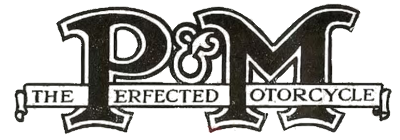

Panther were motorcycles produced between 1904 and 1968.
The company began in Cleckheaton, Yorkshire, as Phelon and Moore.
A report on the 1924 Motor Cycle Show reads, in part:
A modified Panther, to be known as the Cub, is to be marketed during the coming season. It has... smaller mudguards, and a silencer which conforms to Brooklands regulations... The side-valve model remains unaltered, except as to price, which has been reduced to £70.
1928-1929 Speedway and two-stroke models appeared on the market and they listed the Redwing - a big single with a tuned engine.
1931 Saw the arrival of headlights that could could function independently.
1932 The 249cc model was introduced. Although it was fitted into a conventional frame with a downtube, the engine had an inclined cylinder and the oil tank formed in the crankcase.
1933 The company forged a link with Pride and Clarke who sold large numbers of their 250cc machines.
1934 That particular model won the prestigious Maudes Trophy, and later that year 348cc Red Panther and Stroud trials models were produced.

1939 The 250cc model supplied to Pride and Clarke was given mudguards and a red-panelled tank, and sold quite cheaply. It was the subject of some derision but proved itself to be a good worker.
1940 The firm had had many plans and designs on the drawing board but these were all shelved as production turned to war contracts.
Post War to 1953. The company produced three singles and several variations including a trials version.
1956 The three singles were joined by two lightweights with Villiers engines.
1959 A scooter, known as the Princess joined the range.
1960s The arrival of the very successful Mini Minor found Panther in a shrinking market. The same happened earlier in Europe with the arrival of Fiat and Citroen minicars.
1962 The Official Receiver was called in, although production continued.
1963 The range was cut to five models.
1964 The range was cut still further - to three models.
1965-1967 Just one single and one twin model left the factory, with orders fast diminishing as competition from Norton and AMC grew stronger.
1968 Production ceased.
Sources: Graces Guide, Motor Sport Magazine